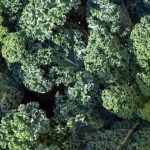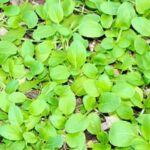Vegetable gardening in Northern California offers a unique opportunity for enthusiasts to cultivate a wide variety of produce in the region’s specific climate and terrain. With its Mediterranean-like climate characterized by mild, wet winters and warm, dry summers, Northern California provides an ideal environment for growing vegetables all year round. From the fertile valleys to the coastal regions, there are diverse microclimates that cater to different types of vegetable crops.
The key to successful vegetable gardening in Northern California lies in understanding the nuances of the climate and terrain. Whether you are a seasoned gardener or just starting out, knowing what vegetables thrive in this region is essential.
Tomatoes, peppers, kale, and other leafy greens are just some of the popular options that flourish in Northern California’s conditions. By selecting the right vegetables and following best practices for soil preparation and maintenance, gardeners can enjoy bountiful harvests throughout the seasons.
In this article, we will delve into the essentials of vegetable gardening in Northern California, covering topics such as soil preparation, planting techniques, pest management, seasonal planting calendars, and harvesting tips. By exploring these aspects in detail and providing insights on community resources and events available to vegetable gardeners in the region, we aim to equip readers with valuable information to make their gardening experience both rewarding and successful.
Let’s embark on a journey to uncover the beauty and abundance of vegetable gardening in Northern California.
Best Vegetables to Grow in Northern California
Vegetable gardening in Northern California offers a plethora of options for growers due to its unique climate and terrain. The region’s Mediterranean-like weather with mild, wet winters and warm, dry summers makes it an ideal place for cultivating a variety of vegetables. When deciding on what to plant in your Northern California garden, it is essential to consider the specific conditions that will ensure a successful harvest.
Tomatoes
One of the most popular vegetables to grow in Northern California is tomatoes. With the long, warm summers in the region, tomatoes thrive and produce flavorful fruits. Varieties such as Early Girl, Brandywine, and Sungold are well-suited for Northern California gardens. Whether you prefer slicing tomatoes for sandwiches or cherry tomatoes for snacking, there is a tomato variety that will flourish in your vegetable garden.
Peppers
Another excellent choice for vegetable gardening in Northern California is peppers. Bell peppers, jalapenos, and Anaheim peppers are just some of the varieties that do well in this region. Peppers require plenty of sunlight and warm temperatures to thrive, making them an ideal crop for the sunny days that Northern California experiences during the growing season. Whether you enjoy sweet bell peppers or spicy chili peppers, there are many options available to home gardeners.
Kale
For those looking to add some leafy greens to their vegetable garden in Northern California, kale is a fantastic choice. This cold-hardy vegetable can withstand the cooler temperatures of winter without issues. Varieties like Lacinato (also known as dinosaur kale) and Red Russian kale are popular choices among local gardeners. Kale is not only nutritious but also adds color and texture to your garden beds throughout the year.
Soil Preparation and Maintenance
In Northern California, the Mediterranean climate brings both hot summers and mild winters, affecting soil moisture levels and plant nutrient uptake. By incorporating compost into the soil before planting, gardeners can enhance its fertility and create a favorable environment for vegetables to thrive. Composting also encourages beneficial microbial activity in the soil, promoting natural processes that support plant growth and root development.
Apart from composting, proper soil maintenance involves mulching to conserve moisture, prevent weed growth, and regulate soil temperature. Mulching also helps improve overall soil health by providing a protective layer that reduces erosion and compaction. With careful attention to composting practices and consistent monitoring through soil testing, vegetable gardeners in Northern California can set a strong foundation for bountiful harvests throughout the growing season.
| Aspect | Details |
|---|---|
| Composting | Enriches soil with organic matter, improves structure, increases water retention |
| Soil Testing | Helps understand pH levels, nutrient content for informed fertilization decisions |
| Mulching | Conserves moisture, prevents weed growth, regulates temperature |
Planting and Watering Guide
Planting and caring for vegetables in Northern California requires a thorough understanding of the climate and soil conditions unique to the region. When starting a vegetable garden in Northern California, it is essential to choose the right location that receives ample sunlight throughout the day.
Most vegetables thrive in full sun, so selecting a spot with at least 6-8 hours of sunlight is crucial for healthy plant growth. Additionally, ensuring proper drainage in the chosen area will help prevent waterlogging, which can lead to root rot and other issues.
Once you have selected the ideal location for your vegetable garden, it is important to prepare the soil properly. Northern California’s soil can vary greatly depending on the specific region, so conducting a soil test to assess its pH level and nutrient content is recommended.
Based on the results of the soil test, you may need to amend the soil with organic matter such as compost or aged manure to improve its structure and fertility. Incorporating organic material into the soil not only provides essential nutrients for plant growth but also helps retain moisture, promoting healthy root development.
When it comes to planting vegetables in Northern California, timing is key. Cool-season crops like lettuce, broccoli, and peas should be planted in early spring or late summer to avoid heat stress, while warm-season crops such as tomatoes, peppers, and squash are best planted after the last frost date in spring.
To ensure successful germination and establishment of your vegetable plants, make sure to water them consistently during their initial growth stages. Mulching around the base of plants can help retain moisture in the soil and reduce water evaporation, especially during hot summer months when consistent watering is essential for plant health.
| Best Practices for Planting Vegetables in Northern California | Incorporate Organic Matter Into Soil |
|---|---|
| Ensure proper drainage and sunlight exposure | Choose appropriate planting times based on crop type |
| Conduct a soil test before planting | Mulch around plants to retain moisture |
Pest and Disease Management
Pests and diseases are common challenges that vegetable gardeners in Northern California face, but with the right strategies, they can be effectively managed to ensure a successful harvest. Here are some tips and techniques for preventing and controlling these issues:
- Regularly inspect your plants: One of the most important steps in pest and disease management is early detection. Regularly inspect your vegetable plants for any signs of pests, such as holes in leaves or discoloration. By catching problems early, you can prevent them from spreading and causing significant damage.
- Practice crop rotation: Rotating your crops each season can help prevent the buildup of pests and diseases in the soil. By planting different types of vegetables in different locations each year, you disrupt the life cycles of pests and pathogens that may be specific to certain plant species.
- Implement companion planting: Some plants have natural repellent properties against certain pests when grown together. For example, planting marigolds near your tomatoes can help deter aphids. Research companion planting techniques that are effective for deterring common pests in Northern California.
When it comes to controlling diseases like powdery mildew, there are specific steps you can take to minimize their impact on your vegetable garden:
- Avoid overhead watering: Wet leaves provide an ideal environment for powdery mildew to thrive. To prevent this fungal disease, water your plants at the base rather than using sprinklers or hoses that wet the foliage.
- Improve air circulation: Powdery mildew spreads more easily in humid conditions with poor air circulation. Prune overcrowded branches and space out your plants to allow for better airflow, reducing the risk of powdery mildew developing.
- Use organic fungicides: If powdery mildew does appear on your plants, consider using organic fungicides like neem oil or sulfur-based sprays to combat the disease while minimizing harm to beneficial insects and wildlife in your garden.
By implementing these pest and disease management strategies tailored to the unique conditions of vegetable gardening in Northern California, you can protect your crops and enjoy a bountiful harvest throughout the growing season.
Seasonal Planting Calendar
Northern California offers a unique climate that allows for year-round vegetable gardening, with distinct cool-season and warm-season crops thriving in different parts of the year. To make the most of your vegetable garden in this region, it is essential to follow a seasonal planting calendar that suits the specific conditions of Northern California. Here is a comprehensive guide to planting vegetables throughout the year:
- Spring: Spring is an excellent time to start planting cool-season crops in Northern California. Vegetables like broccoli, lettuce, peas, and carrots thrive in the mild temperatures and ample rainfall during this season. Make sure to sow seeds or transplant seedlings early in spring to allow them enough time to establish before the warmer weather arrives.
- Summer: As temperatures rise in summer, it’s time to focus on warm-season crops that can handle the heat. Some popular vegetables for summer planting in Northern California include tomatoes, peppers, cucumbers, and zucchini. Remember to provide adequate water and mulch around plants to retain moisture in the soil during hot weather.
- Fall: Fall is another great opportunity to grow cool-season vegetables as temperatures begin to cool down again. Plants like kale, spinach, radishes, and beets do well in the crisp autumn air of Northern California. Start planting these crops in late summer or early fall for a bountiful harvest by late fall or winter.
By following a seasonal planting calendar tailored to Northern California’s climate patterns, vegetable gardeners can maximize their yield and enjoy fresh produce throughout the year. Whether you’re growing hearty greens in spring or juicy tomatoes in summer, understanding which vegetables thrive during each season will help you achieve success in your vegetable gardening endeavors in this unique region.
Harvesting and Storage Tips
Harvesting Vegetables
When it comes to harvesting vegetables in Northern California, timing is key. It’s important to harvest your vegetables at the peak of ripeness to ensure the best flavor and nutritional content. One tip is to check for visual cues like color, size, and firmness to determine if a vegetable is ready to be picked.
For example, tomatoes should have vibrant colors and a slight give when gently squeezed. Additionally, harvesting in the morning when temperatures are cooler can help preserve the flavors of your vegetables.
Storage Tips
Proper storage is essential to maintain the freshness and flavor of your harvested vegetables. Different vegetables have different requirements for storage, so it’s important to know how to store each type properly. For instance, root vegetables like carrots and beets can be stored in a cool, dark place with high humidity to prevent wilting.
Leafy greens, on the other hand, should be stored in a breathable bag in the refrigerator to retain crispness. It’s also crucial to remove any damaged or spoiled pieces before storing them to prevent spoilage of other vegetables.
Canning and Freezing
If you have a surplus of vegetables from your garden in Northern California, consider preserving them through canning or freezing. Canning involves heating food in jars to kill bacteria and seal them for long-term storage. This method works well for tomatoes, peppers, and cucumbers that can be turned into sauces or pickles.
Freezing is another option that preserves the freshness of vegetables by locking in nutrients quickly after harvesting them. Vegetables like peas, green beans, and corn freeze well and can be enjoyed throughout the year. Remember to label your canned or frozen goods with the date so you can use them before they lose their quality.
Community Resources and Events
In conclusion, vegetable gardening in Northern California offers a unique and rewarding experience for both seasoned gardeners and newcomers alike. The region’s diverse climate and fertile soil create an ideal environment for growing a wide variety of vegetables, from juicy tomatoes to vibrant kale. By following the tips outlined in this guide, including proper soil preparation, planting techniques, and pest management strategies, gardeners can enjoy a bountiful harvest year-round.
One of the key aspects of successful vegetable gardening in Northern California is taking advantage of the local resources and events available to gardeners. Farmers’ markets provide access to fresh produce, seeds, and plants, while also offering a space for growers to network and share tips. Gardening clubs offer opportunities for enthusiasts to connect with like-minded individuals, participate in workshops, and exchange knowledge about best practices for vegetable gardening in the region.
Overall, community resources play a vital role in supporting vegetable gardeners in Northern California on their horticultural journey. By joining forces with fellow gardeners, attending events, and staying informed about seasonal planting calendars, individuals can enhance their gardening skills and cultivate a thriving vegetable garden that not only provides nourishing produce but also fosters a sense of community among those with a shared passion for growing food locally.
Frequently Asked Questions
When Should I Plant Vegetables in Northern California?
In Northern California, the best time to plant vegetables is typically in the spring after the last frost has passed. This is usually around March or April. However, certain vegetables like peas and leafy greens can be planted earlier in late winter.
What Vegetables Are Grown in Northern California?
Northern California is known for growing a variety of vegetables due to its mild climate and fertile soil. Common vegetables grown in the region include tomatoes, squash, peppers, broccoli, lettuce, carrots, and beans. These vegetables thrive in the temperate climate of Northern California.
What Vegetables Grow Year Round in California?
California’s year-round growing season allows for a wide array of vegetables to be cultivated regardless of the time of year. Vegetables such as spinach, kale, Swiss chard, radishes, and carrots can be grown year-round due to the state’s favorable climate conditions.
Additionally, herbs like cilantro and parsley also do well throughout the year in California’s moderate temperatures.

If you’re looking to get into vegetable gardening, or are just looking for some tips on how to make your current garden better, then you’ve come to the right place! My name is Ethel and I have been gardening for years. In this blog, I’m going to share with you some of my best tips on how to create a successful vegetable garden.





